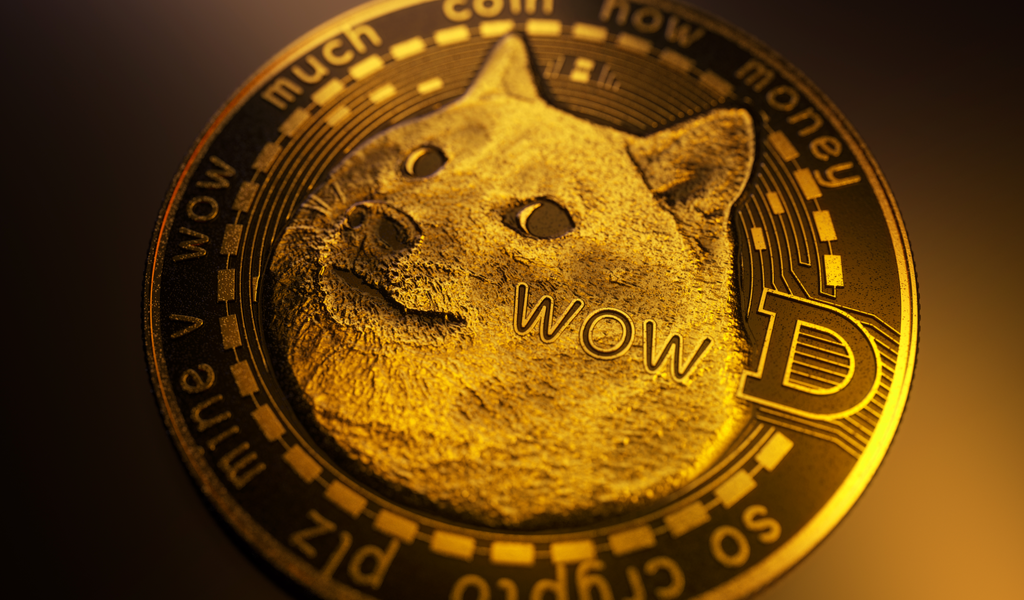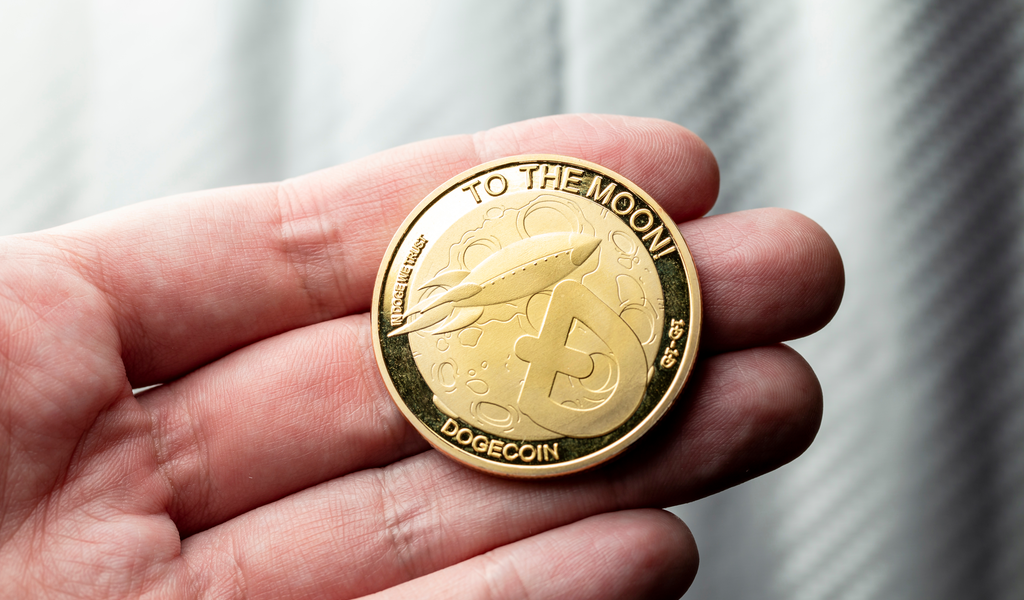Dogecoin is probably the world’s most profitable joke!
Dogecoin is a type of cryptocurrency that began as a joke, but it’s safe to say that people are taking it pretty seriously now. With the total value of dogecoins in circulation estimated to be nearly $50 billion, its gained popularity with both participants and onlookers who are fascinated by its rise. According to CoinMarketCap, it is currently the 5th most valuable cryptocurrency in the market, having increased more than 6,000% in value in just one year alone!
A few months ago, Tesla’s Elon Musk tweeted about dogecoin (not for the first time either), and it ended up doubling in price. It also saw a spike so high in April that it momentarily broke Robinhood’s cryptocurrency trading system.

So, what exactly is it?
Dogecoin is a cryptocurrency – which is a digital currency that can be bought and sold, invested in/with or even used to buy goods and services – just like any other currency. The main difference between cryptocurrencies and traditional currencies is that the latter is administered by governments, cannot be traded universally without the hassle of conversion, and has to be paid tax upon. With crypto, none of these obstacles exist. Although some governments are attempting to place restrictions on crypto as well, these are yet to be implemented.
However, like most other currencies, cryptocurrencies also differ in value, both in terms of the actual monetary figure and the number of uses it has – although the differences between cryptocurrencies lie in their individual codes.
For instance, bitcoin, the world’s first and most popular cryptocurrency, is far more valuable than dogecoin. One bitcoin is worth about $62,000 while one dogecoin is only estimated to have a value of around 3 dimes. This is because bitcoin has set 21 million as the cap for how much of it can be in circulation at a time, while dogecoin currently has around $129 in circulation and continues to make new blocks of coins to “mine” each year. (Mining is the process by which one can obtain cryptocurrencies).
On the other hand, uses for cryptocurrencies are also limited by whether or not they are accepted in certain avenues. Just like your American dollar may or may not be accepted at different businesses in a foreign country, cryptocurrencies like bitcoin and dogecoin may or may not be accepted in the purchase of goods and services. In this context, bitcoin is far more widely accepted than dogecoin. Although it has found a few niches of its own, including using dogecoin to tip online artists.
However, unlike most currencies, the appeal of dogecoin seems to lie in the fun of being a part of an active online community – a collective inside joke, if you will. Seeing that the coin itself features the image of and is based on doge, a Shiba Inu dog that was popularized through a meme, this seems accurate.
The group is active on Reddit and has community-funded things like helping a 16-year-old sponsor No. 98 at the famous Talledega Superspeedway through dogecoin. In 2014, they have also crowdfunded a sponsorship to get Nascar driver Josh Wise to advertise dogecoin on his car and raised money for charitable causes.
In a paper about digital currency, Usman Chohan, an economist at the University of New South Wales Business School wrote, “Dogecoin is not so much an alternative deflationary numismatic instrument as it is an inflationary leisured exploration of community-building around a crypto asset.”
So, how did it start?
On December 6th, 2013, a pair of engineers created dogecoin a coin.
Billy Markus was a programmer at IBM Portland, Oregon when he came up with the idea to create a cryptocurrency that would be “open to the masses”, unlike bitcoin, which was a bit of a mystery – no one knows who created it and it had only been introduced to a small, niche group of miners at the time.
He fully intended it to be an amusing, weird thing he could have fun with, and he wanted someone to help him do it. This ended up being Jackson Palmer, an employee at Adobe (ADBE), who purchased the domain dogecoin.com – a nod to the “doge” meme which was popular at the time.
Dogecoin is a very self-aware cryptocurrency. It does not take itself too seriously; it still features a picture of the popular Shiba Inu “doge” at the very top of its website surrounded by its trademark which is a bunch of phrases written in broken English typed out in Comic Sans and is captioned: “Dogecoin is an open-source peer-to-peer digital currency, favored by Shiba Inus worldwide.”
However, it would be a mistake to dismiss dogecoin as a mere joke. Its popularity has skyrocketed over the past few years, having gained value and a few high-profile supporters at that. One such person is Elon Musk, CEO of Tesla. However eccentric he may be, one of his tweets to his 50 million followers can cause the cryptocurrency to soar. It could be as bizarre as tweeting a photo of the painting by Spanish artist Joan Miró, called “Dog Barking at the Moon.” He captioned his tweet with this image “Doge Barking at the moon”, which caused dogecoin’s value to shoot up in April.
Dogecoin is very much community-driven. It has a sort of cult-like following, especially on Reddit. A group – similar to the WallStreetBets group which caused GameStop’s stock’s to literally crash the stock market – has decided that they were going to propel its value “to the moon” this year. So far, they’ve managed to get it to rise over 600%, so I’d say they aren’t doing too bad with that goal.

So, should you invest in Dogecoin?
Well, there’s no definitive answer to that question. Bitcoin, which is the more actively traded and more widely accepted crypto, often fluctuates pretty volatilely, so there’s no guarantee that dogecoin couldn’t stumble either. But there’s no denying the fact that it has risen astonishingly this year.
It is ultimately up to you whether you are willing to uphold the risk of investing in dogecoin. But do you know who isn’t benefitting from the mammoth rise of dogecoin’s value? Billy Markus, who sold all of his dogecoins when he lost his job in 2015. He used his earnings to buy a Honda Civic.



